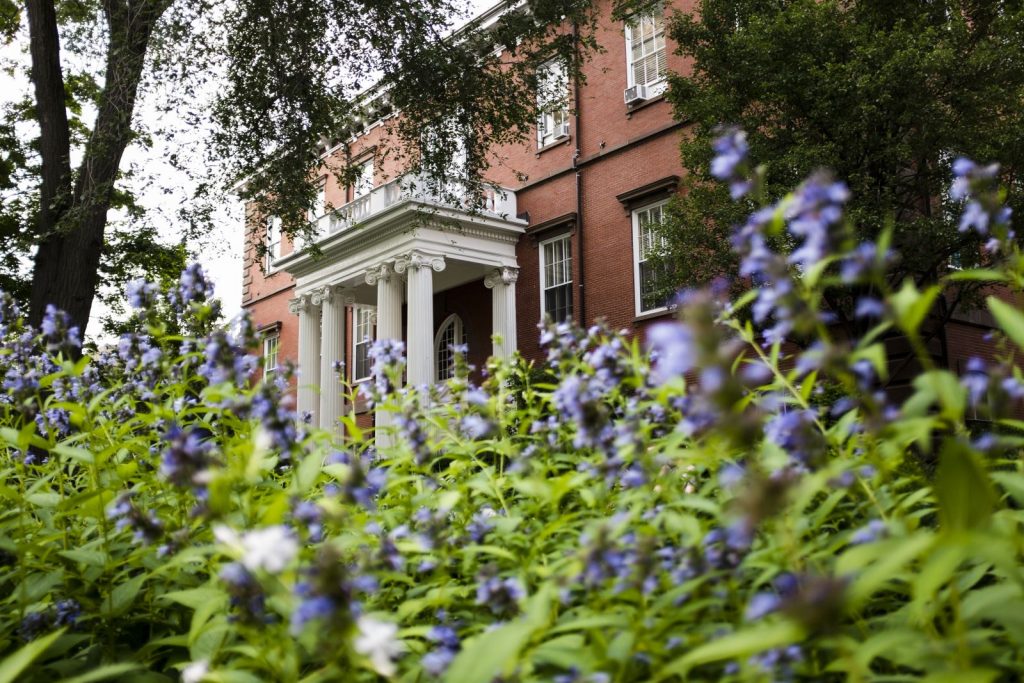By Abigail Epplett, M.A. student in Museum Education
If you’ve read one of my previous blogs on completing a practicum, you already know that I created an exhibit called “Abby Kelley Foster: Freedom, Faith, and Family” for the National Park Service. I decided to share this information with the Tufts community and signed up to participate in GS3.
What is GS3?
GS3 stands for “Graduate Student Speaker Series”. It’s open to any graduate student in the School of Arts and Sciences who wants to share their research with a general audience. I chose a topic in American history, but talks can be given in any area of study.
How to Prepare
Like any presentation, you will need to prepare ahead of time. Don’t try to “wing it”! I found the three most important steps to preparing for my GS3 talk were having a script, designing beautiful slides, and practicing my talk.

Have a Script
I had previously written a script for a short video documentary on the life of Abby Kelley Foster, which I created for the Abby’s House women’s shelter earlier this year. The runtime on the video was about 21 minutes, so I did not have to add much to the script. Because the talks are held over Zoom in their current format, I wasn’t worried about reading off the script; the attendees would watch my slides instead of my face. However, I wasn’t “married” to my script. Although I sometimes read verbatim what I had written, I also elaborated on different points depending on how much time I had left in the talk. Plus, having a script allows me to easily lengthen or shorten the talk depending on time constraints. I was able to give a longer version of the talk to volunteers at the Blackstone River Valley National Heritage Corridor using a lengthened script.
Slide Design
I had previously designed many of the slides as part of an online exhibit I created for the National Park Service in celebration of the 100th anniversary of the 19th amendment, which gave women the right to vote in local, state, and national elections. I had designed additional slides to use in the documentary for Abby’s House, a women’s shelter in Worcester, MA named after Abby Kelley Foster.
While my background in graphic design definitely helps me to create beautiful slides, anyone can create engaging slides by following a few basic rules.
- Use pictures. Your audience members already are hearing the information. Why not give them some interesting visuals as well? Good pictures are large enough to be easily recognizable but not so large that they overpower the entire slide.
- Use fewer words. Although I am definitely guilty of breaking this rule, using fewer words makes the slide more effective. A text-heavy slide can make your audience members to feel like they are reading a book instead of listening to a presentation.
- Keep the slides short. My rule of thumb is 60 to 90 seconds per slide. A 25-minute talk like GS3 should have 20 to 25 slides. Longer talks should have more slides. When I led a study group on the life of Abby Kelley Foster for the Osher Lifelong Learning Institute at Tufts, I averaged 100 to 125 slides per class.
Practice!
Between presenting the pop-up poster exhibit, leading a study group, and creating a documentary, I had plenty of practice giving my talk on the life of Abby Kelley Foster. Even so, I still went over my slides a few times in the days leading up to the talk. This also allowed me to practice a component of the talk that you might not initially consider; be sure to drink enough water! Make sure to have water on hand during your talk, and practice drinking the water between slides. You will be talking almost non-stop for half an hour, and your throat will get dry.
The Moment of Truth
My presentation went great! I was not nervous at all, because I knew I was prepared. Several of my classmates from the Museum Studies program came to support me. Questions from knowledgeable audience members are a lot of fun to answer! As an added bonus, the video was recorded and will appear on the Graduate School of Arts and Sciences YouTube channel. It’s a great way to share your work with friends and relatives around the world.
You Can Do It, Too!
If you still have doubts about giving a talk with GS3, don’t forget these benefits:
- The talk gives you a chance to present your newly acquired research knowledge to your peers, along with faculty and staff at Tufts.
- Giving a talk at Tufts looks great on your resume and CV.
- You will even receive an honorarium, a $50 gift card to Amazon.
If you are interested in participating in GS3, be sure to contact Angela Foss in the GSAS Dean’s Office. You won’t regret having this experience!
